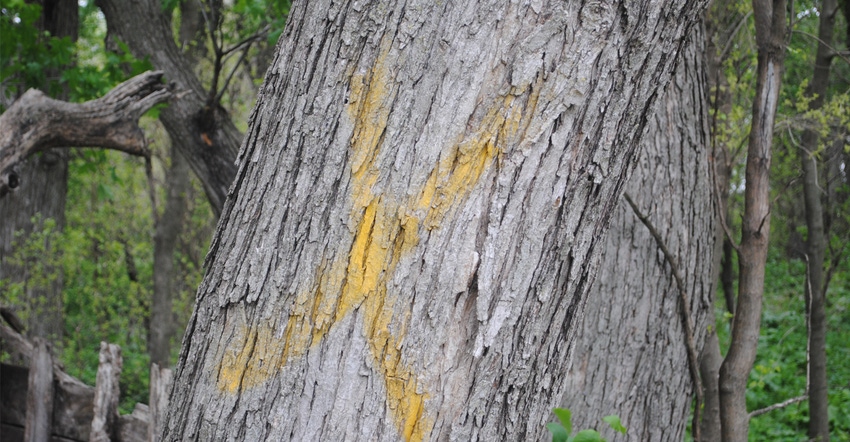
My wife, our sons and I spent plenty of time this past spring working around our farm woodlands. We were focused especially on removing and thinning rogue trees — mostly mulberry — that began inhabiting fencerows around the farm.
This is not easy cutting. Most of the trees are formed more like shrubs, tangled and intertwined with wire fencing and around fence posts. I enjoy cutting wood, but this is not fun work, although it was far overdue around our place.
The cleanup after this kind of thinning also is tough going. The springy branches are tangled, and they don’t pile into our tractor loader bucket evenly to be hauled away.
Most landowners prefer to cut firewood and complete thinning operations in the fall, winter or early spring. It is more comfortable for the chain saw operator and those helping because temperatures and humidity are lower, and you generally don’t have to fight as many biting insects. Branches are not laden with heavy leaves, so you can see where you are cutting, and the branches are not so heavy to handle.
However, there is still summer work to do in the woods, along with the enjoyment we receive from woodlands in the summer. Our woodlands are infested heavily with invasive mulberry trees. An occasional mulberry is fine, but our groves are choked with small mulberry trees beneath the gigantic maple, cottonwood and hackberry trees.
Mulberry is tough cutting with a chain saw or a handsaw. It can be poky and springy, and quite difficult to work with. For woodland owners, summer might be the right time to identify those trees, like my mulberry, that need to be removed when the weather turns cooler.
Tree identification is much simpler when you can see the leaves on the trees. It also is easier to understand where individual trees fit into your woodland ecosystem when the trees are green. You can find dead limbs, diseased or dying trees, or trees that already have died.
When I am working or walking in the woods around our place, I often carry a can of bright orange paint to mark trees that I want to thin in the fall or winter. Some woodland owners go so far as to cut their rogue or hazard trees in the summer, leave the trees on the ground, and come back to remove brush or cut firewood from those fallen trees in the fall and winter months.
Either way, summer is the perfect time to take an inventory of trees in your woodlands. If you walk the woods in early spring, you may be able to identify understory tree and shrub species that you may not have known existed on your property.
You also may notice invasive, non-native species that are creeping into your woodlands, so you can intervene and get rid of those before they become a larger problem.
In the Nebraska Forest Service publication, “How to manage our woodlands for sustained and maximum benefits,” Steve Rasmussen, district NFS forester, writes that the first physical activity that should occur is to walk through the woodland to inventory the site, and evaluate the factors influencing the potential for meeting your objectives for that woodland.
Rasmussen says that the inventory should start with identifying types, sizes and condition of trees and other vegetation, along with noting the density and distribution of trees and shrubs. It is only after such an evaluation takes place that management practices such as thinning; pruning; tree removal; invasive weed, insect and disease control; and replanting efforts can be decided.
If you are thinking about harvesting some of the tree resources, an inventory is crucial to proceeding. You must know what you have before you can offer it for sale. Summer is a good time to start the process.
If you need help with your tree inventory, contact a professional forester, state forestry agencies or local conservation agencies for more information.
About the Author(s)
You May Also Like






